Articles
The Best Berries to Enjoy This Season
Juicy, round, colorful bursts of flavor. That's what most of us think about when we picture berries. They are the gems of summertime. Naturally sweet and juicy, berries are high in antioxidants and among some of the best fresh fruits you can enjoy. They have many health benefits including helping to strengthen immunity and fight against viral infections, lower blood pressure, and may help prevent and manage inflammation-related conditions.
Berries are uniquely high in antioxidants and fiber.”
Berries are uniquely high in antioxidants and fiber,” said Caroline Thomason, RD, CDCES, a dietitian based in Washington D.C. Some berries are higher than others, she explains, noting that raspberries have nearly 9 grams of fiber per serving. “Antioxidants in berries include anthocyanins, ellagic acid, and resveratrol,” she told us. “Each of these nutrients help combat oxidative stress in the body and can reduce inflammation and may improve brain health and cardiovascular health to name a few.”
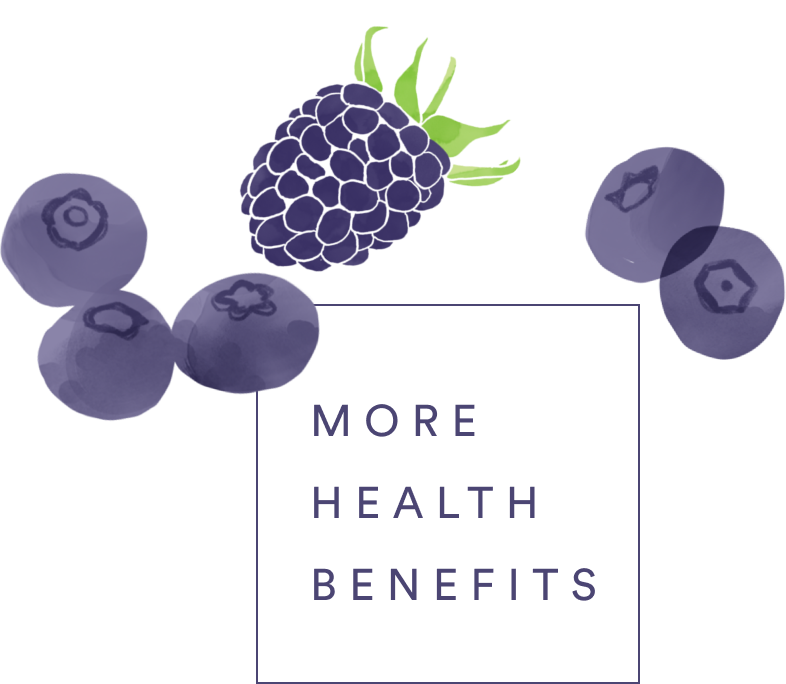
Berries are well studied for their health benefits, and not just for immunity or overall energy and vitality.
Want to lower your blood pressure? Try eating more blueberries. A small 2023 study found that when participants ate the equivalent of about 3/4 cup of blueberries a day, their blood pressure lowered.[1] That same study also found a positive association with eating blueberries and improved cognitive function. The antioxidants in blueberries are thought to help blood vessels relax, allowing for extra blood flow to your brain.
Berries also make a great defense against viral infection, such as common cold and flu. As a rich source of vitamin C, antioxidants, and polyphenols such as anthocyanins, flavonoids, and phenolic acids, berries have therapeutic properties. These polyphenols have been found to have anti-inflammatory and antimicrobial components. In particular, elderberry, blueberry, and raspberry have proven to be effective against viral infections.[2]
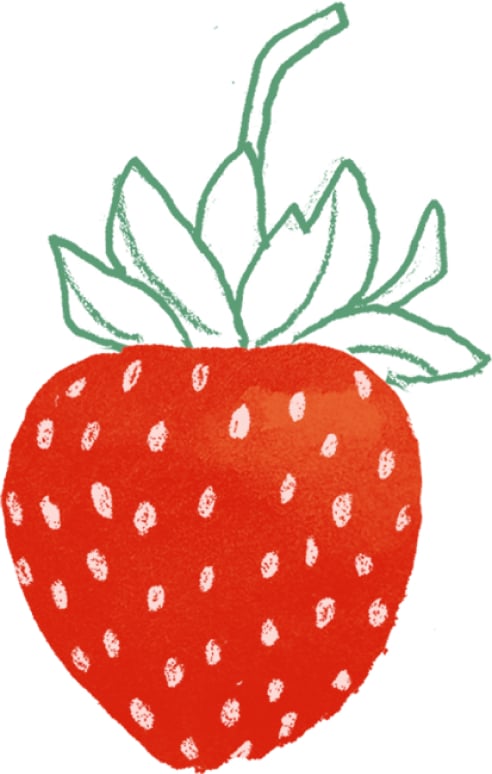
Additionally, the antioxidants found in strawberries may help prevent and manage inflammation-related conditions, such as cardiovascular disease and diabetes, according to 2021 research.[3]
Even lesser known berries, like the boysenberry, have been the subject of health research. In 2021, scientists identified the polyphenols in a boysenberry and apple juice concentrate that led to reduced tissue damage in lungs.[4]
This breakthrough could be helpful for those dealing with asthma and other inflammatory lung conditions. It's worth noting that large scale epidemiological studies have found that increased fruit-and-vegetable consumption already correlates with reduced asthma symptoms.
Berries are one of the lowest-sugar fruits for your blood sugar.”
“Berries are one of the lowest-sugar fruits for your blood sugar,” Thomason said. “This is great news for people with diabetes because you can eat more, and feel more full, without excessively spiking your blood sugar.” They are also a good option for both kids and adults who prefer a sweeter taste without added sugar.
The recommended dietary allowance for sugar is 24 grams per day for women and 36 grams per day for men, Thomason tells us. Considering that 1 teaspoon of added sugar has 4 grams of sugar, it can add up quickly.
“When eating berries, in smoothies, juices, or your favorite snack, pairing this healthy carb with a source of protein can go a long way in keeping you satisfied,” she says. “Even though berries are a healthy source of carbohydrates that are also high in fiber, they might not be the most filling food on their own. Pairing them with some nuts or yogurt can help slow down absorption and keep you full for longer after eating.”
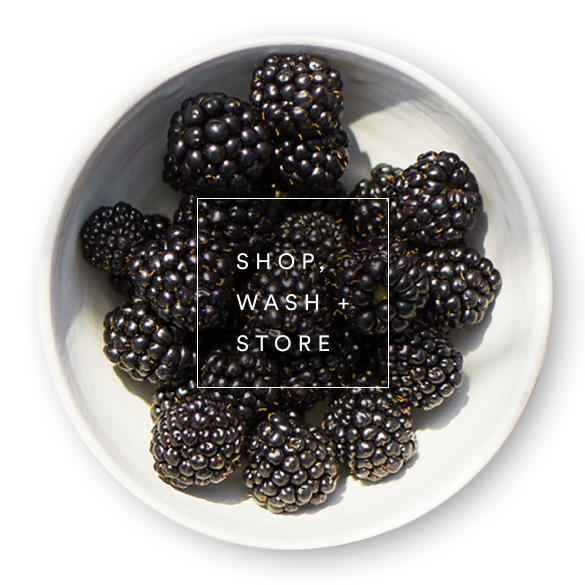
Berries are quite versatile. You can buy them at the store, find a large pint at your local farmers' market, or even grow them in your own garden. Once you bring them home, you want to find ways to keep them fresh for as long as possible.
Freshness begins when you shop. As you choose berries, be sure to check for mushy or soft spots. Any discoloration or mold can be a sign that berries are past their prime.
For storage, it's okay to leave them on the counter, especially if you plan to enjoy them within a day or two. Otherwise, put them in the front of your refrigerator to keep them fresh and top of mind. Use a large, airtight container, and try to keep them in a single layer.
When it comes to washing, you don't want to hold them under the sink at full blast, as the pressure can cause berries to squish in their container. Instead, make them a bath. Fill a large bowl with cool water and then place berries in a colander that you can dip into the water. When you are done, gently dry them and transfer the berries to a paper towel-lined airtight container and put in the fridge.
You can also hold off on washing berries until you are ready to use them. Any extra water can cause them to spoil too soon.
To keep them extra fresh, freeze your berries. After washing them, you can pat them dry gently with a towel and then transfer them to a parchment-lined baking sheet in a single layer, so they don't clump together when they freeze. Once frozen, you can transfer them to a freezer-safe bag for up to six months. Use them in smoothies, to top your oatmeal, or to make a summer crumble.
Worried about losing nutrient value if you freeze your berries or buy frozen berries? Research shows that berries maintain their complete nutrition profile after freezing, so this option shouldn't be overlooked.[5] Thomason added, Frozen berries are picked at peak ripeness, meaning they are packed with nutrients and pleasantly sweet.”
Frozen berries are picked at peak ripeness, meaning they are packed with nutrients and pleasantly sweet.”

When shopping for fresh berries, it's important to understand labels and where your fruit comes from. You'll usually see berries labeled organic or wild. Without those labels, it's safe to assume they are conventionally grown. Every year, the nonprofit Environmental Working Group puts out a Shopper's Guide to Pesticides in Produce, and both strawberries and blueberries tend to be on that list.
Conventional
Fresh produce is grown with a variety of chemicals to manage the soil, pests, and disease. This means that the produce may have residue of chemical fertilizers, pesticides, or weed killers. This option tends to be the most affordable option.
Organic
Fresh produce is grown in accordance with the rules for organic agriculture, avoiding chemical pesticides, weedkillers and fertilizers, and also using other practices such as rotating crops and amending the soil with compost. This produce tends to be more expensive.
Wild
When it comes to berries, you can buy farmed berries (such as the options above) or wild berries, which means that these varieties grow wild in nature, not on farms. They have been harvested (or collected) and then packaged for the grocery store or a farmers' market. While both farmed and wild berries have similar nutritional benefits, wild berries have a slight edge, according to research.
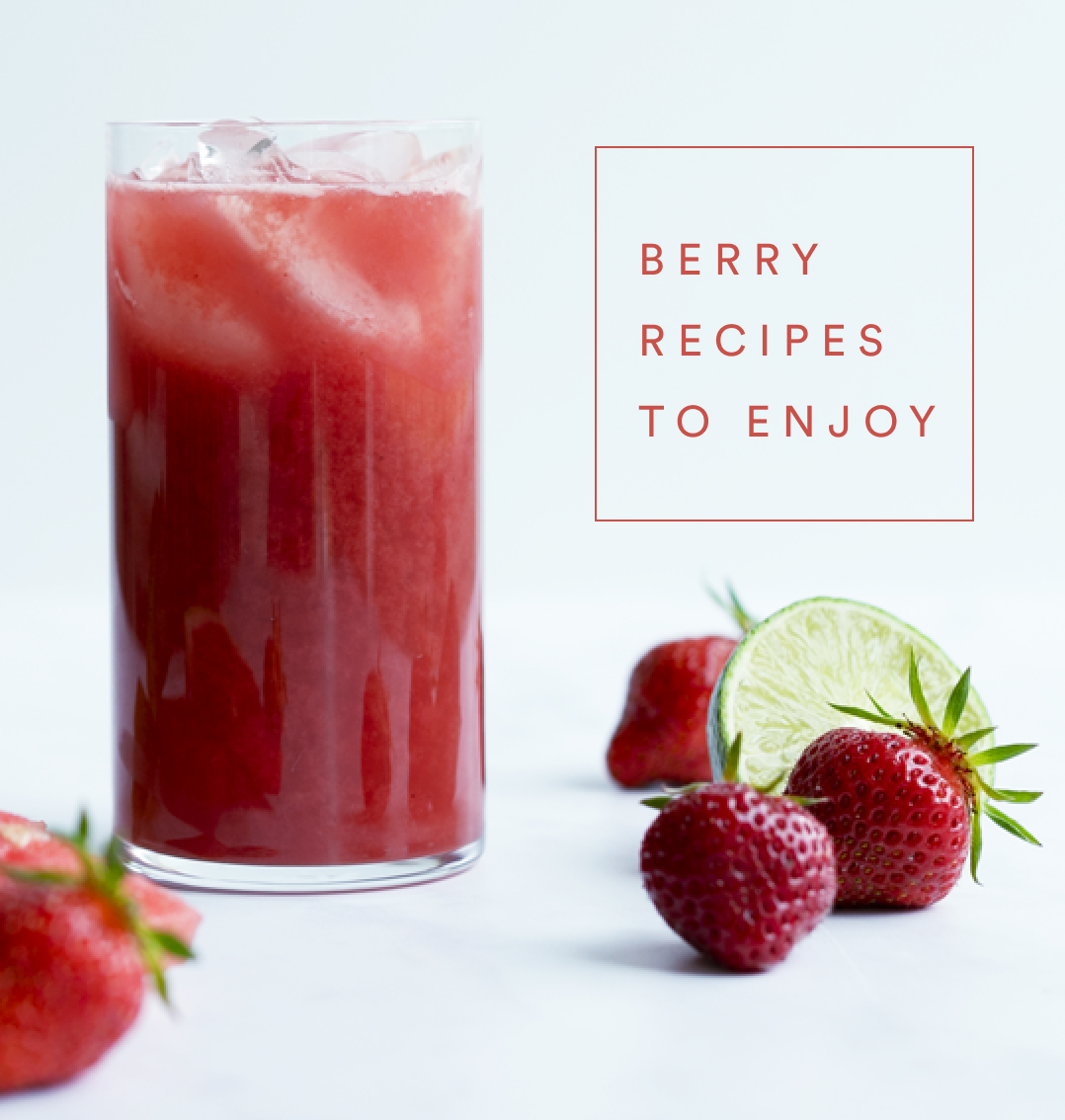
Berry Mint Burst
This juice combines the sweetness of strawberries with cooling cucumber, aromatic mint, and zesty lime. Strawberries and limes are rich source of vitamin C while cucumber provides essential hydration along with vitamins K and A. Mint leaves add a refreshing touch and support digestion.
Blackberry-Lime Juice with a Kick
This hydrating juice offers a burst of fresh flavor with the mint, lime, and antioxidant-rich blackberries, which are also a great source of vitamin C, K, and manganese. The jalapeño is optional but delicious for those who enjoy a bit more spice.
Blueberry Basil Lemonade
The rich plum color in this juice comes from anthocyanins, which are an antioxidant found in blueberries. Enjoy the benefits while sipping this juice, maybe near a pool or on a picnic.
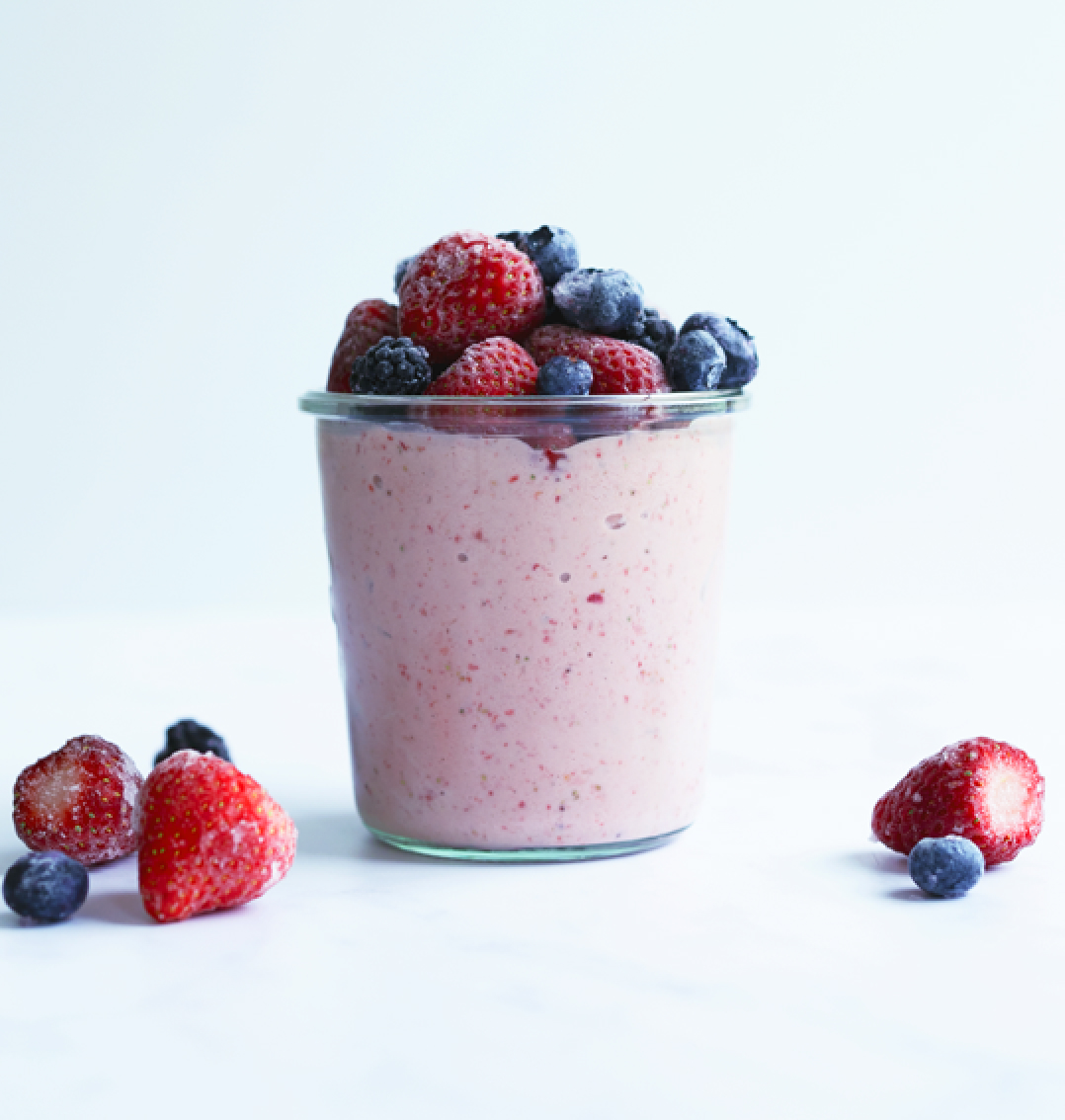
Strawberry Avocado Smoothie
This creamy smoothie will fill you up with vitamin C from the strawberries and the healthy fats and potassium from the avocado. The frozen strawberries act like ice so no need to add any to the recipe.
A Super Berry Smoothie
The dynamic duo of blackberry and blueberry create an antioxidant-packed, nutrient-dense smoothie, while also offering sweet, earthy flavor. Spinach adds some extra minerals (like iron, potassium, and folate), so you can stay hydrated as you sip.
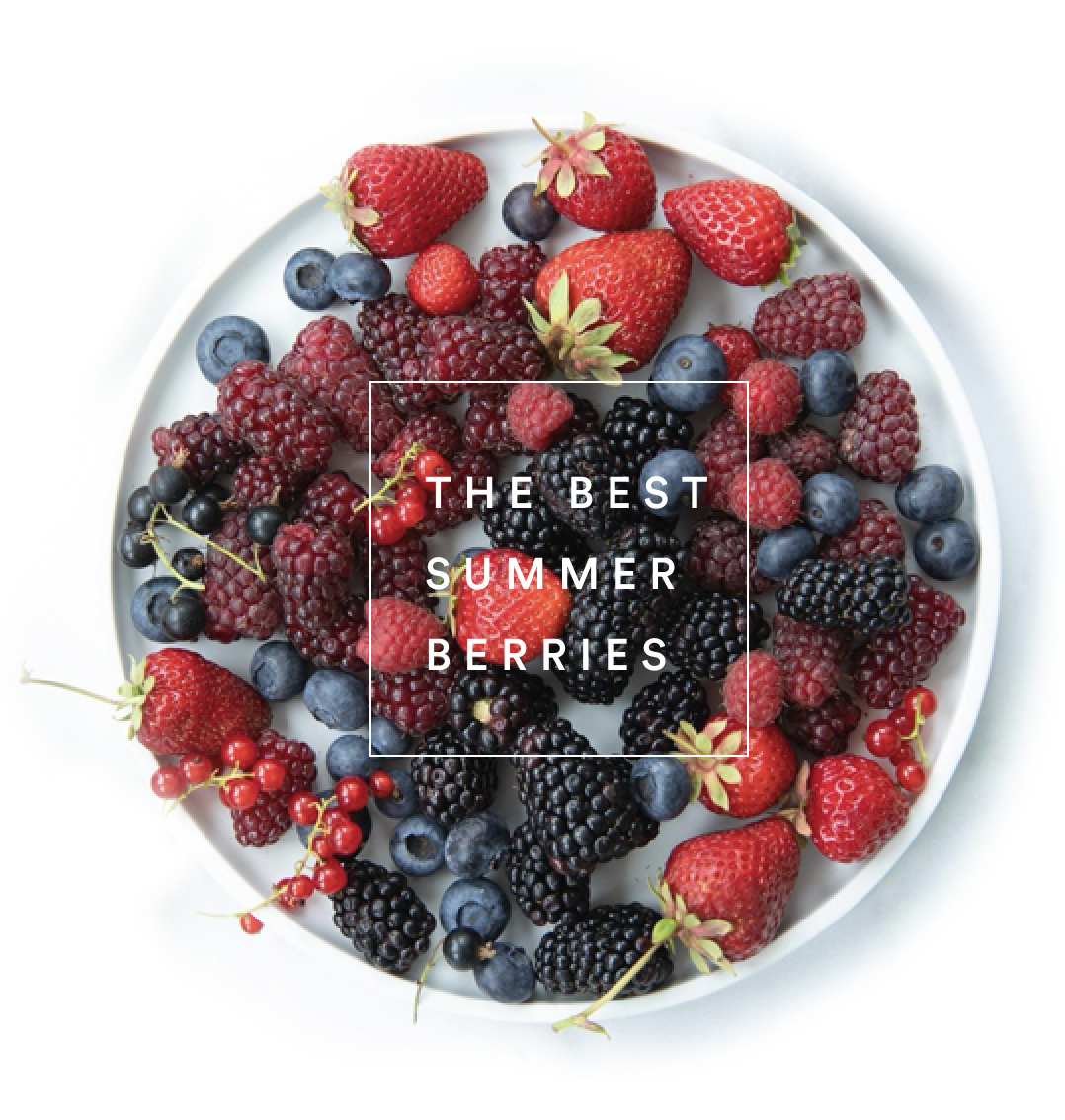
Here's a guide to some of the best berries of the season with more varieties than your standard strawberry or blueberry—and some ways to include them in juices, smoothies, and more. Since some of these berries are specific to certain regions, they may be hard to find fresh in your area. We've noted the most common form these berries are available in the U.S. You can also grow some of these on your own by planting their bush or purchasing the plant at a garden store.
Blackberry
WHERE TO FIND IT: in the wild, at farmers' markets, grocery stores, and you can grow your own
These larger, plump dark berries are quite sweet when ripe. They are packed with vitamins C, K, calcium, and potassium.[7] Ancient Romans supposedly used the leaves from blackberries to make tea to treat health issues. American poet Mary Oliver wrote, “When the blackberries hang swollen in the woods, in the brambles nobody owns, I spend all day among the high branches, reaching my ripped arms, thinking of nothing, cramming the black honey of summer into my mouth.”
Blueberry
WHERE TO FIND IT: in the wild, at farmers' markets, grocery stores, and you can grow your own
These small, sweet berries have a classic summer taste. You can find both wild and/or organic blueberries in the store sold fresh, frozen, or dried. A good rule of thumb is that the smaller the berry, the bigger the flavor. Blueberries contain pectin, vitamin C, potassium, and significant amounts of tannins, which can help fight bacteria.[8] They are native to North America and were an important food source for Native Americans for thousands of years.[9]
Boysenberry
WHERE TO FIND IT: at farmers' markets or in jams or sauces
Boysenberries are a cultivar, meaning they are a cross between a raspberry, blackberry, and loganberry. They are a deep red-purple color and taste similar to a blackberry with more tang and sweetness. Fun fact: the boysenberry is what put Knott's Berry Farm in California on the map. Walter Knott was the first person to commercially cultivate the boysenberry, selling it at his farm stand in 1932.
Huckleberry
WHERE TO FIND IT: usually found frozen in specialty grocery stores; you can find them at farm stands or pick-your-own farms during peak season July through September
This small, dark purple berry grows wild in the Pacific Northwest and has special significance to the indigenous people that resided there. Huckleberries are easily mistaken for blueberries and taste both sweet and slightly tart, often used to make jams and syrups. Environmental anthropologist Joyce LeCompte-Mastenbrook calls the huckleberry, “a romanticized berry in terms of its wildness, and also its amazing flavor profile.”[13] Nutritionally, they contain plenty of calcium and vitamins A and C.[14]
Juneberry
WHERE TO FIND IT: forage for them with an expert
Many places name these berries for when they tend to pop up in nature—June—but they are also called saskatoon, serviceberry, and even chuckleberry. They grow on deciduous shrubs and small trees throughout North America and are often mistaken for blueberries, even though they are more closely related to apples and pears. These berries are softer and have a more reddish-purple hue than a blueberry. Like other berries, they are high in fiber and anthocyanins. They are also high in calcium, magnesium, and manganese.[15] You can also find them frozen from online providers.
Mulberry
WHERE TO FIND IT: forage for them with an expert or look for them dried or frozen at health food stores or online
These berries come from large, deciduous trees native to warm, temperate areas in Asia, Africa, and the Americas. Resembling blackberries, these fruits are sweet and juicy and come in black, red, and white varieties. You can enjoy them fresh or dried. Fresh berries are hard to find in stores because they go bad quickly, but you can find mulberry trees if you take a foraging tour with an expert. The dried variety makes a great topping for a smoothie bowl. Mulberries are high in antioxidants, vitamin C, and iron.[17]
Raspberry
WHERE TO FIND IT: in the wild, at farmers' markets, grocery stores, and you can grow your own
These tart-and-sweet berries are packed with fiber, containing more than 8 grams per serving, along with antioxidants and anti-inflammatory properties. Studies have found that they offer a range of benefits for people with type 2 diabetes, prediabetes, and related health conditions.[18] Raspberries, like blackberries, are members of the Rosaceae family, similar to roses. Dozens of different varieties exist, which vary in color from very pale to golden, blue, red, and black. They are rich in vitamin C, K, and folate.[19] Their leaves also contain healing properties, as red raspberry leaf tea is known as a uterine tonic and general pregnancy tea.[20]
Strawberry
WHERE TO FIND IT: in the wild, at farmers' markets, grocery stores, and you can grow your own
Strawberries belong to the rose family. Not only are they sweet, juicy, and delicious, but these red berries are full of health benefits. They contain a wide variety of vitamins, minerals, and fiber. Just one serving, which is about eight berries, offers more vitamin C than one orange. They also contain an antioxidant known as ellagic acid, which has anti-inflammatory properties. Ellagic acid has been shown to slow down the progression of certain chronic diseases, including heart disease, cancer, and diabetes.[21] Dealing with allergies? They also contain a flavonoid called fisetin, which helps immune cells control inflammatory reactions to allergens.[22]
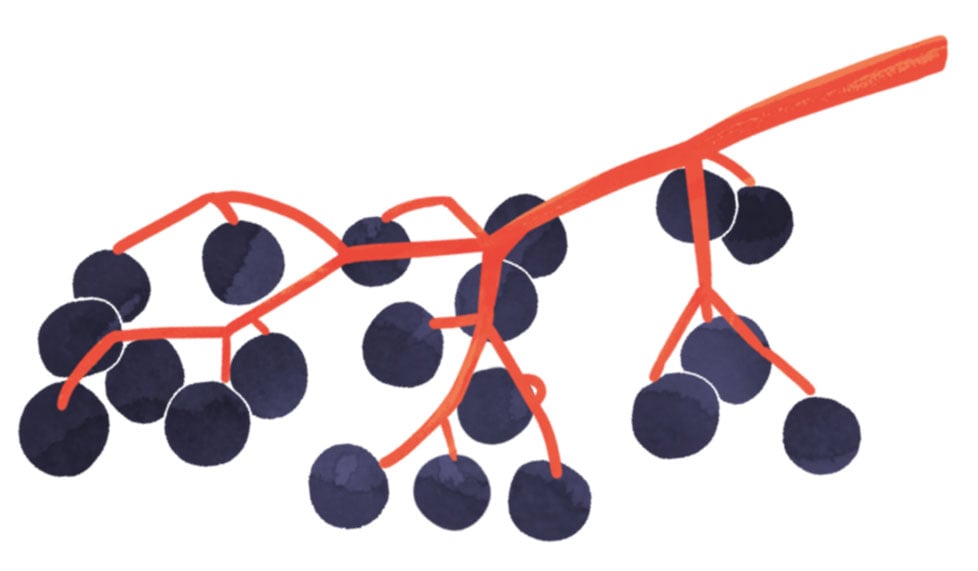
Uncommon Berries
You Can Grow
Want to start your own berry patch at home? If you have the privilege of space and time to add some edibles to your garden, these berries are harder to find at grocery stores or farmers' markets. You can find small starters for these berry bushes at garden centers across the country. Expand your berry palate and try some of these other varieties.
Chokeberry
Also called Aronia berries, these fruits have a dry, tart flavor, giving them their colloquial name “choke.” These shiny, edible fruits look similar to blueberries and exhibit black, purple, or red hues. They grow on shrubs that are native to woodlands, swamps, and bogs of eastern North America. They are full of antioxidants, including anthocyanins. Don't have time to grow them? You can find them as a juice concentrate, or look for frozen ones online.
Currant
If you've never tried a fresh currant, you're not alone. In fact, they were banned in the U.S. in 1911. At the time, both red and black currants were believed to act as hosts to a deadly fungal disease called blister rust, a killer to white pine trees and a huge threat to the forest industry. By 1966, new disease-resistant varieties of currant shrubs became available, and the federal government relaxed its ban. Even today, some states still restrict or prohibit growing fresh currants. In others, you might find them fresh at the farmers' market. Commercial growers of currants can be found in New York, Oregon, Illinois, and Minnesota. Check with your state Department of Agriculture for more info. From a nutrition perspective, currants are bursting with nutrients, including high amounts of potassium, calcium, and vitamins A and C. They are a similar size to a blueberry with a more tart flavor and are part of the gooseberry family. You can find black, red, white, and pink varieties to grow.
Elderberry
Usually found in health food stores as a syrup or in teas, elderberries, also known as sambucus nigra, are tiny, round black-blue berries that grow on elder shrubs. They have a distinct tart flavor with an earthy accent but should not be consumed raw. Think of them more as medicine and like a small cranberry. They must be cooked, as some people have severe reactions to them and cooking helps reduce the risk of any health issues. That's why these fresh berries are most often found in syrup form. They have been used traditionally in folk and herbal medicines for years, as they are a great source of vitamins A, B, C, quercetin, tannins, amino acids, and anthocyanins.[10] If you want to make your own elderberry syrup, you can also find dried berries online or at health food stores or an herbal shop.
Gooseberry
Visually, these berries resemble something like a grape with a thin, translucent skin. They can be green or a pinkish red color and taste slightly sweet with a hint of tart lemon. You can often find them along hiking trails growing in the wild. In India, gooseberries are often referred to as amla and considered to be rejuvenating. These berries have antioxidant properties and help to lower cholesterol and improve immune function.[12] Don't have time to grow them? You may also find these frozen berries online or in health food stores.
Goumi Berry
Not to be confused with dried goji berries that are imported, goumi berries can be grown fresh in your backyard or in a container. They are not commercially available because, like mulberries, they don't transport well. But they are delicious and offer some amazing health benefits to you and to your soil. The berries transition from green to a bright red when they are ripe and are a similar size to blueberries. They are full of vitamins A, C, and E, and also contain essential fatty acids in their seeds. In the garden, these shrubby plants are known as “nitrogen fixers,” as they form a symbiotic relationship with bacteria in the soul and gather nitrogen from the atmosphere and feed it to surrounding plants.
Lingonberry
This wild berry grows wild throughout the Northern Hemisphere and is also popular throughout Scandinavia. If you have ever shopped at Ikea, you may have seen jams and syrups made from lingonberries. These small, red berries are tart, and not often eaten raw. Their flavor is more suitable for sauces, chutneys, or preserves, similar to a cranberry. While hard to find fresh, look for them frozen or canned lingonberries in specialty grocery stores or health food stores. Lingonberries are classed as “superfruits” with the highest content of antioxidants among berries and a variety of health-promoting effects.[16] Don't have time to grow them? Look for them frozen or dried at health food stores or online, and even at Ikea where they sell lingonberry jam.
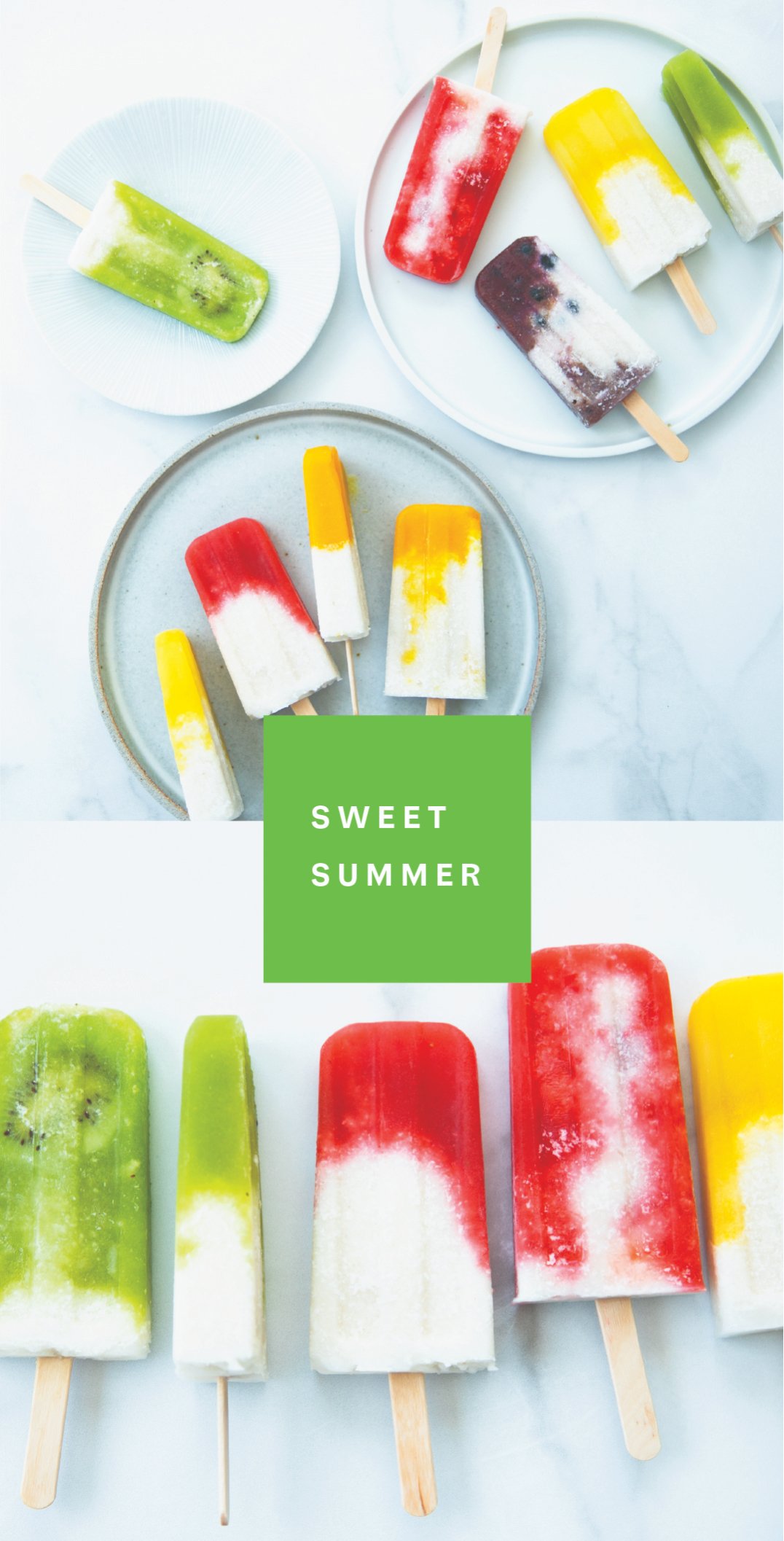
Coco Ice-Pops
This recipe was inspired by Christina @concious_cooking
Freezing any extra juice is a nice way to use up a larger batch during the summer months. Alternatively, you could set out to make frozen treats with your “smoothie” strainer. With the larger perforations, this strainer creates a beautiful puree that you can freeze into delicious, fiber-rich popsicles. We made kiwi, strawberry, blueberry, mango, and pineapple purees by feeding the fruit through the juicer using the “smoothie” strainer. We then filled the popsicle trays with the puree and some coconut milk, giving the popsicles their beautiful colors and a touch of creamy goodness.
Disclaimer: This article is for informational purposes only and is not intended to constitute medical advice. You should consult a medical professional before starting any nutritional program or making changes to your diet.
sources:
- https://ajcn.nutrition.org/article/S0002-9165%2823%2946300-9/abstract
- https://pubmed.ncbi.nlm.nih.gov/34857187
- https://www.ncbi.nlm.nih.gov/pmc/articles/PMC8614674
- https://www.ncbi.nlm.nih.gov/pmc/articles/PMC7958577
- https://khni.kerry.com/news/how-does-processing-impact-nutrition-of-fruit-reducing-food-waste-of-berries
- https://fdc.nal.usda.gov/fdc-app.html#/food-details/173946/nutrients
- https://www.ncbi.nlm.nih.gov/pmc/articles/PMC9853077
- https://extension.illinois.edu/blogs/garden-scoop/2019-01-19-history-blueberries-native-american-staple-domesticated-superfood
- https://pubmed.ncbi.nlm.nih.gov/37049862
- https://pubmed.ncbi.nlm.nih.gov/30744864
- https://www.seattlemet.com/travel-and-outdoors/2022/05/northwest-berries-seattle-fruit-farms-berry-picking
- https://fdc.nal.usda.gov/fdc-app.html#/food-details/169808/nutrients
- https://www.ncbi.nlm.nih.gov/pmc/articles/PMC7245660
- https://www.ncbi.nlm.nih.gov/pmc/articles/PMC8150318
- https://fdc.nal.usda.gov/fdc-app.html#/food-details/169913/nutrients
- https://www.diabetes.co.uk/news/2016/feb/red-raspberry-components-beneficial-for-people-with-type-2-diabetes,-study-finds-90996104.html
- https://fdc.nal.usda.gov/fdc-app.html#/food-details/167755/nutrients
- https://www.sciencedirect.com/topics/medicine-and-dentistry/red-raspberry-leaf
- https://www.ncbi.nlm.nih.gov/pmc/articles/PMC8885183
- https://www.ncbi.nlm.nih.gov/pmc/articles/PMC10218992
- Choosing a selection results in a full page refresh.
- Press the space key then arrow keys to make a selection.




